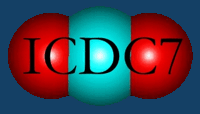The conference sessions will be
organized around five major themes as presented here:
Theme 1. THE FATE OF FOSSIL FUEL
EMISSIONS
The
amount of CO2 in the atmosphere has increased substantially since
pre-industrial times, owing primarily to fossil fuel carbon
emissions. A fraction of this has been further redistributed to the
oceans and terrestrial biosphere by natural processes. What do the
observed spatial patterns and time series’ in the atmosphere and
oceans reveal about the flows of natural and anthropogenic carbon?
This theme includes observations of CO2, CH4, their isotopic ratios,
and any additional observations that provide explanatory power. It
also includes patterns and mechanisms of air-sea gas exchange,
inverse models that turn concentration patterns into large-scale flux
estimates, and new developments in instrumentation to enhance our
observational power necessary for increasing our understanding of
carbon cycle processes.
Theme 2. LAND USE AND THE
TERRESTRIAL CARBON CYCLE
Land
management over past centuries has been the second largest
contributor to global carbon emissions. Furthermore, most of the
observed inter-annual variation of the rate of increase in the
atmosphere is caused by varying exchange with the terrestrial
biosphere. How can we quantify and understand the effects of land
management on the carbon cycle? How can insight be gained into
natural variations? Flux measurements, studies of the effects of
wildfires, logging, soil management, urbanization, dams and
reservoirs, woody encroachment, and seasonal to sub-decadal climate
variations are examples of topics that fit this theme.
Theme 3. CARBON CYCLE RESPONSE
TO ENVIRONMENTAL CHANGE
The
carbon cycle, and thus the course of atmospheric CO2 and CH4, could
be strongly influenced by Arctic warming, surface ocean
stratification, moisture in terrestrial ecosystems, sea level rise,
and the stability of methane clathrates, among others. How can we
improve understanding and provide early warning of significant
changes? Ice core and sediment data have revealed major shifts in
the recent geological past, and analysis of these data is one
approach to gain insight. Did climate change drive the observed
changes in CO2 and CH4, or vice versa? What indicators in these data
might have application today?
Theme 4. EFFECTS OF HIGH CO2
ON LAND AND OCEAN ECOSYSTEMS
Some
evidence suggests that increasing levels of CO2 may increase rates of
photosynthesis,
change nutrient utilization, and alter demand for trace metals,
causing further changes throughout ecosystems. Increasing CO2 in the
oceans lowers pH, and there is evidence of detrimental effects on
coral reef communities and organisms forming carbonate shells. What
are the effects high CO2 has on the earth system other than simply
the radiative forcing of climate?
Theme 5. MANAGING THE CARBON CYCLE
Anthropogenic
emissions, emissions limitations, sequestration, and ocean chemistry
will likely play leading roles in the future atmospheric CO2 burden.
Coupled models will be required for long term projections. How can
we gain enough confidence in these models for them to aid in decision
making? Which features can be validated? Can we estimate the length
of time that a particular sequestration option is secure? What are
biophysical limits of biological sequestration? How much can be
stored in geological reservoirs, how much in the oceans? What are
likely environmental impacts of different strategies? How does the
effectiveness of sequestration compare to decreasing the "carbon
intensity" of our activities? Finally, methods, including
instrumentation, need to be developed for independent verification of
emissions and sequestration.
Copyright © by The 7th International CO2 Conference Web Site All Right Reserved.










